#as these giant malamute breeders
Note
Unleash your rage, please tell me all about the giant malamutes. Also I love your beasties, they’re so cute and you put a lot of effort into them and it shows!
Ohoho I have spoken about this many times before but since you asked so nicely....
Alaskan Malamutes are a type of Inuit freighting sled dog. Inuit sled dogs still bred and used by Indigenous people who have traditions in dog sledding look a very specific way and this includes size. There's a clear, straight line between the function of the dog (hauling heavy freight in cold climates) and the size of the dog.
Let's examine other Inuit sled dogs:
The Greenland Dog, one of the most isolated land race dogs in the world for example (in that its development was and is currently very isolated from admixture of European dogs). Size is quoted in their standard as: "Height: dogs: 58-68 cms (23-27 ins) at shoulder; bitches: 51-61 cms (20-24 ins) at shoulder.
Weight: dogs: 34-47.5 kgs (75-105 lbs), bitches: 27-41 kgs (60-90 lbs)."
Proportionally the dog should be longer than tall.

The Canadian Eskimo Dog (also known as the Canadian Inuit Dog or Qimmiq), is a rare sled breed due to the dog culls that occurred in the 1970s. Size is quoted in their standard as: "
Height: dogs 58-70 cms (23-27½ ins), bitches 50-60 cms (19½-23½ ins).
Weight: dogs 30-40 kgs (66-88lbs), bitches 18-30 kgs (40-66 lbs)."

The Alaskan Malamute has a complicated history, but can most accurately be described as an Inuit style freighting sled dog bred specifically for work in the Antarctic expeditions. Several things to note is that:
1.) a huge majority if not a majority of dogs that make up the founding of the breed are not from Alaska, but rather Eastern and Central Canada, mostly Labrador Huskies (a type of Canadian Inuit sled dog specifically from the Labrador Region) as well as a known Greenland Dog (Bessie).
Below: Labrador Huskies (yes they're still around!) from Northern Lights Dog Sledding:

2.) The standard for the Alaskan Malamute has been revised twice, most significant is the first revision which occurred after the studbooks were open to allow dogs of the M'Loot strain into registration due to the toll WWII work took on the original dogs (who were quite closely related).
3.) Three strains, or families of dogs, make up the modern Alaskan Malamute (Kotzebue (the original registered strain bred for the Antarctic), M'Loot (who were bigger in size and bred for companionship) and Hinman-Irwin (less a strain, more a handful of dogs owned by arctic explorers). This is significant information to understand because the while slight differences in these strains do exist, the dogs were so close in type they were breeding true during first generation admixture, were close enough in size, shape and overall form to be recognized as the same breed, and there are no pure strain dogs left today.
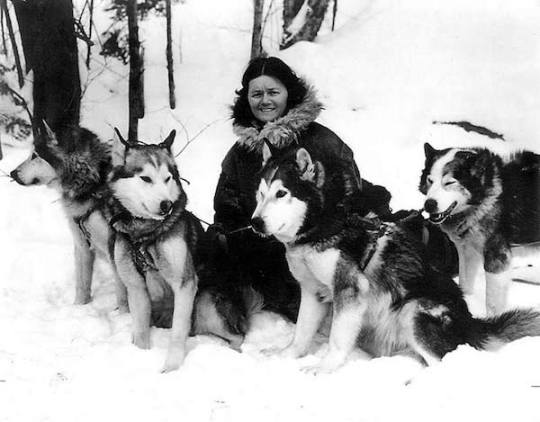
(Eva Seeley with four dogs from the first registered litter of Alaskan Malamutes including CH Gripp of Yukon. Parents were Yukon Jad and Bessie, a dog from Greenland).
The original Alaskan Malamute Standard has size as:
"Height: Of male dog averaging from 22 to 25 inches; of bitch averaging from 20 to 23 inches.
Weight: Of male dog averaging from 65 to 85 pounds; of bitch averaging from 50 to 70 pounds."
Prior to the M'Loot strain's inclusion into the breed registry the breeder of the strain, Paul Voelker lists his dogs as being: "mature dogs range from 23-26 inches at the shoulder and weigh 70-85 pounds".
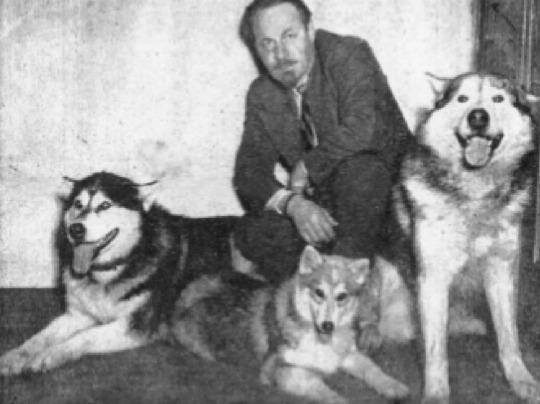
(Paul Voelker with three M'Loot dogs above).
We know that many M'Loot dogs were larger than this, often exceeding 100 pounds much like my own dog, Sigurd who is 30" at the shoulder at 105 pounds (despite his Kotzebue heavy pedigree...), so seeing 110 pounds near the top of the LEAN WORKING WEIGHT would be an excessive animal by anybody breeding this dog's standards, but certainly not unachievable. Again, not desirable to Eva Seeley (founder of the Kotzebue strain, nor to Paul Voelker, founder of the M'Loot strain).
Because of this middle ground where both strains liked dogs around 85 pounds and 25 inches at the shoulder the standard was revised in 1960 to accommodate the inclusion of these slightly larger dogs. The standard now states: "There is a natural range in size in the
breed. The desirable freighting sizes are: Males—25 inches at the shoulders—85 pounds. Females—23 inches at the shoulders—75
pounds."
Proportionally the dogs are longer than tall.
So while there are several different families of dogs that make up the founding of the breed there is only ONE Alaskan Malamute. There is no secondary "type" that is gigantic (120-140 pounds like people like to claim). There is not "standard" Alaskan Malamutes and "Giant" Alaskan Malamutes because 1.) the standard already allows for and encourages the natural size range in the breed which is quite varied. 2.) nobody breeding these dogs in the historical context was calling their strains "Giant Alaskan Malamutes".
So let's examine WHY people call their dogs "Giant Alaskan Malamutes".
The answer is simple: Marketing. People love giant dogs and often see them as status symbols (if you've ever been in a dog breed group where people are bragging about their dog's weight regardless of what shape that dog is in (often overweight) you know what I mean).
More nuanced is that freighting sled dogs like Malamutes, Qimmiq and Greenland Dogs look absolutely behemoth next to "normal" sled dogs like Alaskan Huskies (where 70 pounds is HUGE and 50 pounds is normal) or Siberians which are of a similar size to Alaskans). They're a large dog breed, but they're not giant in the range of actual giant breeds such as Irish Wolfhounds or Mastiffs etc.
Many people breeding "Giant" Alaskan Malamutes also falsely believe and/or tell their clients that their dogs are "pure M'Loot" and spout the mythology that true Alaskan Malamutes from Alaska way back in the day (which is a breed myth, they're not from Alaska remember) were HUGE. like 120-140 pounds huge and use this to justify the size of the dogs they breed (which are just backyard bred, oversized, sometimes not even oversized but just overweight individuals). This myth is easily proven false because it's not like the weight of Voelker's dogs are an unknown, we have heights and weights on many of them and they are very true to many modern "standard" Alaskan Malamutes today. One cannot even claim that the original indigenous dogs were massive because 1.) they didn't exist as explorers at the time often confirm in their writing that the indigenous dogs in Alaska were much the same as those being used across the arctic and into the east 2.) Inuit still use sled dogs today. Traditional Freighting Sled Dogs and we know what they look like and we know what their size is like. The myth that the Alaskan Malamute is some "lost dog breed" is false and takes agency away from Indigenous traditional mushers.
Additionally a huge majority of "Giant" Alaskan malamutes today can be broken down into two categories: those from North America and those from Asia.
"Giant" Alaskan Malamutes from North America will often come from very similar pedigrees. You will see a lot of Cascade, Wakon (particularly this kennel...claiming the dogs are 35" at the shoulders and nearly 200 pounds) and Kingfisher in these pedigrees. These dogs are often long haired, breeders within these lines will often breed long haired dogs purposely as many buyers want very fluffy dogs. Often the dogs are not any bigger than "standard" Alaskan Malamutes, but some can be very big (there is rumor of non-malamute giant breed admixture occurring in the 1980's). Most people breeding within these pedigrees are not necessarily doing the fullest extend of health testing, but it is thankfully becoming more common (can we please for the love of gods tho get people to test more than just hips please). Some dogs in this pedigree type are often accomplish weight pull dogs (because long miles are not being asked of them....) and may or may not be of showable quality, just from a breeder that prioritizes size and breed mythology bs over everything else:
They range from functional and pretty breed standard looking:

To what the fuck is this:
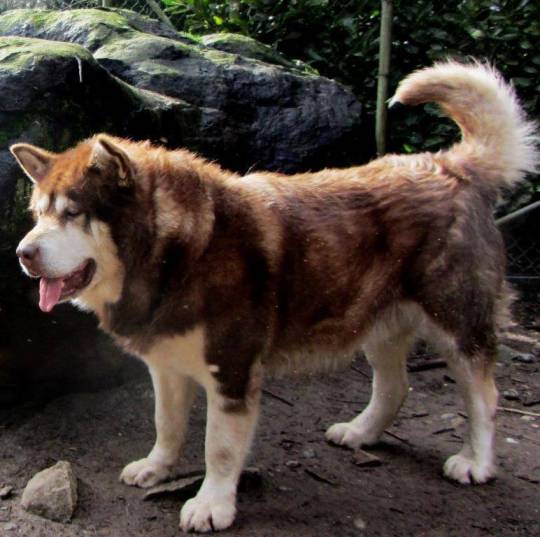
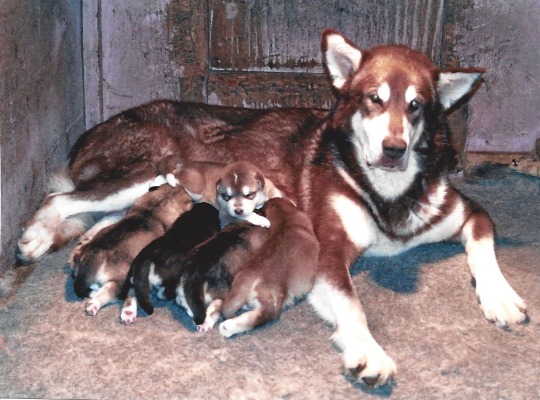
These above dogs are not a "type" of malamute, just dogs with similar pedigrees no different than any other. There are always going to be dogs within a breed that share close pedigree with each other, it's literally just part of how this works. They are not separate unless you want to talk about hush hush paper hanging.
"Giant" Alaskan Malamutes in Eastern Asia unfortunately bear the brunt of the breed's lack of ethics. These dogs are bred HUGE in size, overly loose, overly flewey and the breeders are not shy about the fact that they've bred Tibetan Mastiff into these dogs to achieve the size and hair level. These dogs are bred as pure status symbols and are not getting proper health testing done. I have never once seen a dog from these types of breeders do anything remotely functional. This is a dog that is bred for looks ONLY:
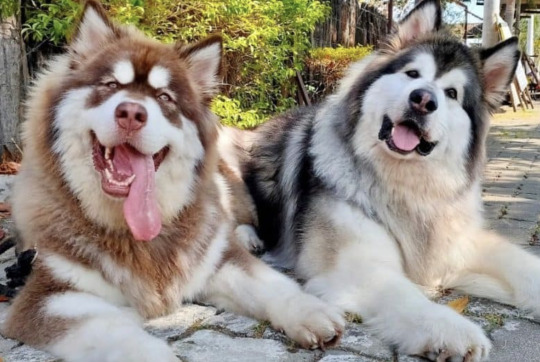
I'm sure you've all see this video (screen shot shown below) of a dog that is absolutely suffering:
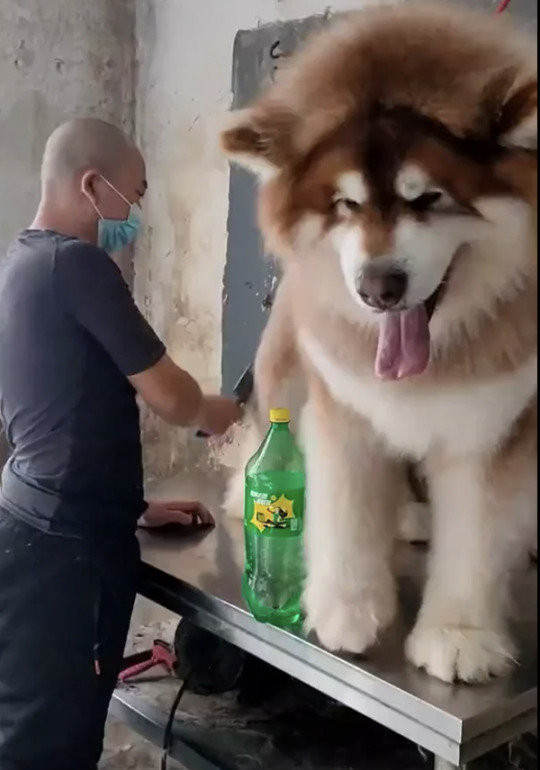
So when it comes to "Giant" Alaskan Malamutes there are some simple truths:
1.) They do not exist historically in Inuit freighting sled dogs
2.) Breeders in the mid-century, regardless of the strain of Malamute they preferred liked dogs around 85 pounds 25 inches at the shoulders.
3.) There are potentially hung papers within the breed histories of "Giant" dogs that may account for their overly large size.
4.) They are not a separate "sub-breed" or a different type of Malamute. They are simply all Alaskan Malamutes as the breed's standard allows for variation in size amongst the dogs.
5.) In my opinion breeding dogs overly large disrespects the purpose and function of the breed.
6.) Larger than average individuals can exist and often are produced from responsible breeders when breeding two ideal size or even smaller than ideal sized parents together. This is because genetics is complicated (Sigurd's mom was 80 pounds and his dad 25.5", 73 pounds. Sigurd is 30" and 105 pounds).
#dogblr#alaskan malamute#greenland dog#dog history#giant alaskan malamute#qimmiq#anyways because of the paper hanging and the NA 'giant' breeders distain for 'standard' dogs#it is unlikely that show/working breeders outside of their circles will associate with them#re: give them puppies or buy from them themselves#also lack of health testing until very recently#so i do suspect eventually they'll become a strain of their own#i can already kind of tell when a dog has certain kennels behind it bc i'm insane#but also even if they're recognizably pet bred 'giant' or whatever#they're still just alaskan malamutes#literally.
104 notes
·
View notes
Text
1 note
·
View note
Text
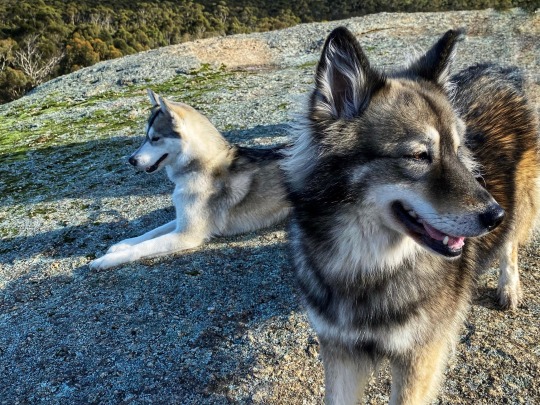
Photo: Tully and Inca from Tikaani Wolfalikes
What is a Wolfalike?
A Wolfalike (the noun being taken from the adjective ‘wolf-like‘) describes a type of dog (Canis familiaris) intentionally created to be as close to the wolf (Canis lupus) in appearance and characteristics as possible while retaining mostly dog-like behaviours but no or negligible actual wolf content.
For years people have been trying to create a Wolfalike dog to this specification. More familiar Wolfalike breeds might be the Northern Inuit Dog, The Utonagan and the Tamaskan – all of these were originally bred using the same founding dogs.
The most popular breeds used in the foundation of the different Wolfalike breeds are the Siberian Husky, the Alaskan Malamute and the German Shepherd; traces of other breeds such as the Samoyed and Norwegian Elkhound and Collie have also been found in the genetic makeup of some Wolfalike dogs. You will also find that some Wolfalike dogs do have a minimal amount of wolf content in them, but this is negligible. Some breeders have used The Saarloos wolfdog or the Czechoslovakian Wolfdog (Vlack) in their breeding programs as well.
Because of people’s difference of opinions on how the various Wolfalike breeds should move forward, many breeders have opted to move away from the closed gene pool clubs and become independent breeders to better develop the breed and widen the gene pool by introducing other Wolfalike type dogs.
Specifications/Standards
A Wolfalike can be large and athletic – or Giant and robust, some are similar in height and weight to the German Shepherd, others tower above the German Shepherd and take on the Timberwolf stance. He or she should have a wolf-like appearance with a dense coat in the winter and a sleeker coat in the summer. The head should bear medium-sized ears and a characteristic “wolfish” mask. The tail should be straight and bushy. Everyone’s perspective of a wolf is different but the more similarities the individual has to a “standard” wolf in looks and movement the better.
Behaviour
Wolfalikes are intelligent dogs, but, on occasion, might like to come across as less clever than they actually are. They love to learn and are really willing to please you, but they do lose interest and get bored easily, at which point they are likely to feign stupidity and forgetfulness! They are loyal and lovable companions with a wonderful Temperament and make fantastic family pets. They get along well in a home environment with children and other animals as long as introduced to them when your dog is a puppy, so they will grow up together.
Wolfalikes are, as a rule, pack animals and are therefore at their best kept together in a group. They can, however, be the only dog if you have a huge amount of time required to commit to their not inconsiderable needs. In an only-dog situation, you will become your dog’s pack and he or she will want to do everything they can with you. You will need to entertain him/her as otherwise he/she will become bored and potentially extremely destructive. Prey drive (which may include small pets such as cats or rabbits…) varies from dog to dog depending on which breeds have been added into their makeup. If you find you have a puppy with higher prey drive, then we suggest plenty of training on a long line lead and that you do not let your dog off lead if it is anywhere near animals unless you have full control with recall.
Care
As with many double-coated breeds, Wolfalikes moult twice a year, usually in Spring and Autumn. During their moults, their soft undercoat will fall out gently and painlessly in tufts for weeks. This process is known as “blowing their coat”. At this time, they will need brushing around 3 times a day. Your house will resemble a snowstorm and you will have tumbleweeds of fur rolling around, so investing in a good vacuum cleaner is a must. Sometimes you will wonder where all the fur has come from – it seems impossible that one dog can be hiding so much.
Occasionally they will also lose their guard hairs (top coat) and when they do, they tend to look very untidy and unkempt until their full coat grows back. When they have finished moulting, daily grooming of Wolfalikes is good practice as it keeps them clean and knot-free. It also gives you a chance to check for lumps, bumps and any injuries or ticks they may have picked up on a walk.
Training
As puppies, Wolfalikes are very quick to learn and willing to please. It is recommended that as soon as they are allowed out in public, you should take them along to an approved training school where they can begin to learn not only some basic manners but also how to mix with other breeds. Some puppies can be very outgoing and bold, whilst others are more reserved and need extra coaxing to join in. Wolfalike dogs need plenty of early socialisation and positive training experiences as they grow. They can be very stubborn at times as they get older, so extra encouragement and patience are needed. They do go through different life stages, just like human beings, and if they are left untrained, habits formed at these times can cause issues as the dogs grow into adulthood. If you start from an early age, most Wolfalike dogs can be successfully let off the lead, and with plenty of training will come back to their owner on command. Training is a lifetime commitment with a Wolfalike dog.
Exercise
As with any large breed dog, care should be taken with the amount of on lead exercise you give a puppy. A good rule of thumb is a ratio of five minutes of exercise per month of age (up to twice a day) until the puppy is fully grown, i.e. 15 minutes (up to twice a day) when three months old, 20 minutes when four months old etc, up to twice a day. Once they are fully grown, they can go out for much longer. As Wolfalikes are a large or Giant breed you really need to be cautious with what you allow them to do at a young age, absolutely no agility, mushing or continuous running until they are past 18 months old, and then it will depend on how the growth of each individual dog is going.
Housing
Wolfalike Dogs love to be part of the family and cuddle up on the sofa with you, just remember when allowing that cute 10kg puppy up on the sofa or your bed for cuddles, that that 55kg Adult will also still think its ok to come up for cuddles, set boundaries from the start. A safe area for when you are out is great to have, as they can get up to mischief as soon as they know you are not around. Crate Training is a sensible thing to do with these dogs if done correctly as it keeps them safe and out of harm’s way.
Some Wolfalikes prefer to be cooler and may want the door open to the outside all day, a nice outdoor area is always a good idea, where they can be dry but still lay out in the fresh air. A fair size garden is ideal for these dogs, remember to check you have no plants that are poisonous to dogs, as Wolfalikes do like to help with the gardening.
Source: International Wolfalike Companion Registry
#australianwolfalike#wolfalike#wolfdog#australianwolfdog#wolves#australianwolflookdog#wolfalikesaustralia#australianwolf
0 notes
Text
I’ve been planning for another dog in the future and am pretty sold on the idea of a doberman, rottweiler, a jadg/patterdale, or a malinois.
But I saw an FB picture of a malamute this morning. That’s a breed I’ve had in the past (most of my past dogs were huskies or malamutes, and my grandfather bred siberian huskies for decades) And now I have malamute fever again. I told myself I’d not have another haha but the heart is like “oh you soooo need another malamute....”
I was looking for breeders on FB out of curiosity and was a bit disappointed, SO MANY breed the massive giant woolies. I’m just not a fan of that kind. I love standard regular ole’ malamutes.
3 notes
·
View notes
Note
Alaskan Malamute
I do like them more than huskies probably because I’m a giant breed person. They’re very majestic but I probably wouldn’t own one because I think they’re like huskies? Not 100% sure on that. But overall they seen like a good,sturdy breed! I wish I could work on more well bred malamutes. Most that come into work seem more like husky,malamute mixed. I heard they don’t have blue eyes but they can throw a blue eye occasionally. But it’s off standard so many responsible breeders breed away from it.
3 notes
·
View notes
Text
Parrots for sale
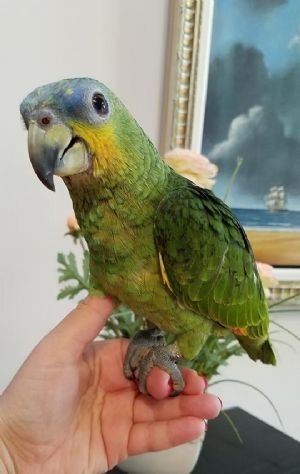
Moluccan cockatooo parrots for sale
Parrots for sale online
Parrots for sale USA
Parrots for sale Canada
Parrots for sale Autralia
Parrots for sale UK
Beautiful Moluccan cockatoo is available. The Moluccan is a large bird, one of the largest white cockatoo species, but can range in size, reportedly because the region in which they are found in the wild is large enough to support sub species. The Moluccan cockatoo is a rosy-pink color, with the depth of the pinkness varying per individual. Like most cockatoos, Moluccans are incredibly sensitive and can become neurotic and upset when they are neglected. They crave attention and love, and can become pests because of this trait.
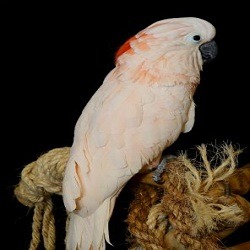
Cape parrots for sale
Cape parrot baby is available. Currently being hand fed two times a day. Accepting deposit now. Cape Parrots are goofy, sweet, and intelligent. Capes are known for their reputations as 'Gentle Giants'. Capes are very playful, curious, and often mischievous birds that need plenty of wood to chew and keep themselves busy. Capes love to swing, climb, and hang upside down, whether from perches, swings, cages, or even your hair. They are very good at being independent and playing by themselves or keeping themselves busy, but they also have great snuggle and cuddle potential. Cape Parrots are prized for talking ability.

Pinapple Green cheek high red parrots for sale – Three
Pinapple Green cheek pairs (high red ) – Three pairs, unrelated; proven. They sit and feed. These are not pets. These are real breeders, not converted pets.

Severe macaw Parrots for Sale
We have Severe macaw available. The Severe Macaw makes a wonderful pet for if you want the macaw personality, but in a smaller size. They are small and easy to handle, and a hand raised Severe Macaw is very social and affectionate. Severe Macaws are eager to play and enjoy interacting with their keepers. Adept at learning some tricks, they can also be pretty fair talkers.

Congo African grey Parrots for Sale
Congo African grey pairs. They sit and feed. All have been scoped by an avian veterinarian in 2015, 2016 and are 100% viable and active. These are not pets. They get aggressive towards people coming near their cage when they want to breed, but will let you clean their cage and change food once you open the cage door. These are real breeders, not converted pets

interested in buying parrots from our breeders? Use the contact form below to contact us and we shall provide more information and pictures.
https://mypetslove.com/buy-animal-pets-online/
tiny teacup & toy puppies available now – yorkie, pom, maltipoo & more
Male and Female Alaskan Malamute Puppies for saleAlaskan Malamute Puppies
ckc french bulldog puppies
Cream French Bulldog males
parrot for sale near me
parrots for sale in florida
parrots for sale in texas
parrots for sale in ohio
parrots for sale in pa
parrots for sale in nc
parrots for sale in ga
parrots for sale in ny
parrots for sale in arizona
parrots for sale
Read the full article
#birdsforadoptioninny#birdsforsaleebayny#birdsforsaleinbrooklyn#parrotbreedersny#parrotsforsaleinnj#parrotsforsaleinny#parrotsforsalelongislandny#quakerparrotforsaleny
0 notes
Text
Me seeing somebody call a malamute with one of the most overly coarse, flewy and exaggerated heads I’ve seen in a long time a “straight wedge”
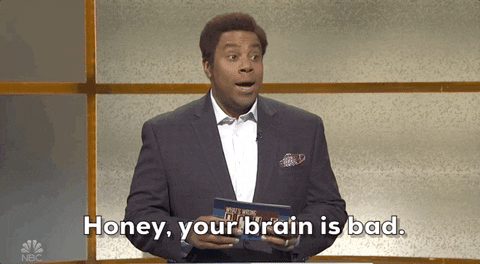
#dogblr#alaskan malamute#AND the stupid assumption that show breeders are making the dogs smaller ? lmao#they must be a giant lines idiot for SURE#it’s head was like a fucking Bernese#I did not say anything directly to them#bc the post was of somebody’s pet of Reddit#but man. I hope I seriously hope these sort of malamutes do not become common#it is…scary to see to be frank#ITS NOT A WEDGE WHEN IT HAS A STOP LIKE A GOLDEN RETRIEVER SIR
14 notes
·
View notes
Text
#mountainridgemalamutes#alaskanmalamutelover#alaskanmalamutebreeder#giantalaskanmalamutes#alaskanmalamutes#lifewithmalamutes#malamutes#mountainridgegiantalaskanmalamutes#alaskanmalamutepuppiesforsale#puppies
1 note
·
View note
Text
Meet the Shiloh Shepherd: A Larger, Gentler Version of the German Shepherd
Shiloh Shepherds were developed in New York by Tina Barber in the 1970s and registered as a breed in the 1990s. Barber wanted a larger, gentler version of the German Shepherd Dog. Today, the outgoing Shiloh is still so new, the breed isn’t recognized by a major kennel club. But to passers-by, the Shiloh certainly stands out. He’s notably larger than the GSD, and his generally plush coat makes him look even bigger. Shiloh owners get used to being asked “What breed is that?” or “How much does he weigh?”
The Shiloh heritage
Shiloh Shepherd courtesy iStock.
Documentation of the crosses used in the breed’s development is limited and confusing. GSDs were likely crossed with Alaskan Malamutes and Old German Shepherd dogs (Altdeutsche Shaferhunde). Regardless of the crosses, the main foundation of the Shiloh is the GSD. Strong, smart, and motivated, the GSD was developed specifically to work: guarding, protecting, and shepherding. Intending to breed specifically for intelligence and utility, Captain Max von Stephanitz developed the GSD in late 19th century Germany.
Movies starring the gallant Shepherd Rin-Tin-Tin added to the breed’s stellar reputation in the states. Today, the Shepherd continues to stand out in military and police work, tracking, personal protection, search and rescue work, herding, guiding, and as a loyal family dog.
Sharing your heart with a Shiloh
In general, Shilohs are softer in temperament than GSDs and not used for serious protection work. Shilohs can excel in assistive service, obedience, herding, therapy work, and search and rescue. Bred mainly as companions, Shilohs have loyal and outgoing personalities. They’re typically patient with children and tolerate other animals, including even the occasional new-coming
dog. They have moderate exercise needs in general: Mainly, they thrive on inclusive activities and companionship.
Despite their size, Shilohs can adapt to yard-less homes if walked and exercised daily. They’re loving family dogs but only match up to folks who can adapt their lifestyle to the breed’s size. At 100 or so pounds, a Shiloh easily fills up a house. He also sheds, and he certainly doesn’t fit in a compact car for vacations!
Shiloh basics
Life span: 10 to 13 years
Weight: About 80 to 130 pounds
How tall? Averaging 26 to 31 inches at the shoulders Coat: The smooth or double coat and the plush coat Grooming: The smooth coat is lower maintenance. The plush coat, however, may shed less.
Colors: Dual colored in black with tan, golden tan, red- dish tan, silver, or sable. Solids in golden, silver, red, dark brown, dark gray, or black sable.
Breeders? There are differences in opinion between the founding club and later established clubs on breed development and breed particulars. Be prepared to spend extensive time researching breeders that align with your expectations.
Shilohs at work in search and rescue
Misha Marshall and Gandalf. (Photo courtesy Misha Marshall)
Misha Marshall has a farm in upstate South Carolina with eight horses and five dogs, including one GSD, 10-year-old Arwen, and two Shiloh Shepherds, 11-year-old Gandalf and 7-year-old Rainey. “I chose Shilohs for search and rescue because I wanted dogs with drive for work but also a laid-back personality for chilling on the farm,” Misha said.
In her South Carolina Search and Rescue Dog Association, about half of the dogs are GSDs. “My GSD, Arwen, is from working lines and spends much of the day looking for employment. But unlike police dogs, for example, SAR dogs spend long periods without a job.”
In her search for an SAR dog, Misha essentially hoped for the intelligence of a GSD but with less intensity. The Shiloh’s gentleness and social nature with other people and dogs also appealed to her. “As I began working with Gandalf, I soon learned he’d simply ignore loose dogs, even when they came run- ning up,” Misha said.
Unleashed dogs are a common problem on searches. “Having a dog with the size and confidence to deter strange dogs, but not to engage with them, was an asset. Gandalf, intent on his mission, once completely ignored a mixed breed pulling violently on his rope to reach him as we passed.”
Some fellow team members were initially skeptical about Misha working a Shiloh in SAR. After all, it’s a new, relatively unknown breed. But Gandalf, trained as a trailing (works on leash) dog, soon proved his worth. In 2007, early in his career, he contributed to the rescue of a Boy Scout lost in the woods.
Not only in the field but in educational settings, Gandalf collects accolades. “Gandalf starred in many SAR demonstrations in elementary schools,” Misha said. “He’s a gentle giant and happily let hundreds of children handle him.” Now retired from SAR work, Gandalf loves accompanying Misha on her morning horse chores.
Misha’s second Shiloh, Rainey, adores SAR for more than just the treats at the end of the search. The work also satisfies her people-loving spirit. “SAR dogs are usually either toy or food driven as their paycheck at the end of a day’s work,” Misha explained. “Shilohs are typically food driven in contrast to the more commonly toy-driven GSD.”
But for the social Rainey, finding a new friend also counts as a big-time reward!
The post Meet the Shiloh Shepherd: A Larger, Gentler Version of the German Shepherd appeared first on Dogster.
0 notes
Text
Meet the Shiloh Shepherd: A Larger, Gentler Version of the German Shepherd
Shiloh Shepherds were developed in New York by Tina Barber in the 1970s and registered as a breed in the 1990s. Barber wanted a larger, gentler version of the German Shepherd Dog. Today, the outgoing Shiloh is still so new, the breed isn’t recognized by a major kennel club. But to passers-by, the Shiloh certainly stands out. He’s notably larger than the GSD, and his generally plush coat makes him look even bigger. Shiloh owners get used to being asked “What breed is that?” or “How much does he weigh?”
The Shiloh heritage
Shiloh Shepherd courtesy iStock.
Documentation of the crosses used in the breed’s development is limited and confusing. GSDs were likely crossed with Alaskan Malamutes and Old German Shepherd dogs (Altdeutsche Shaferhunde). Regardless of the crosses, the main foundation of the Shiloh is the GSD. Strong, smart, and motivated, the GSD was developed specifically to work: guarding, protecting, and shepherding. Intending to breed specifically for intelligence and utility, Captain Max von Stephanitz developed the GSD in late 19th century Germany.
Movies starring the gallant Shepherd Rin-Tin-Tin added to the breed’s stellar reputation in the states. Today, the Shepherd continues to stand out in military and police work, tracking, personal protection, search and rescue work, herding, guiding, and as a loyal family dog.
Sharing your heart with a Shiloh
In general, Shilohs are softer in temperament than GSDs and not used for serious protection work. Shilohs can excel in assistive service, obedience, herding, therapy work, and search and rescue. Bred mainly as companions, Shilohs have loyal and outgoing personalities. They’re typically patient with children and tolerate other animals, including even the occasional new-coming
dog. They have moderate exercise needs in general: Mainly, they thrive on inclusive activities and companionship.
Despite their size, Shilohs can adapt to yard-less homes if walked and exercised daily. They’re loving family dogs but only match up to folks who can adapt their lifestyle to the breed’s size. At 100 or so pounds, a Shiloh easily fills up a house. He also sheds, and he certainly doesn’t fit in a compact car for vacations!
Shiloh basics
Life span: 10 to 13 years
Weight: About 80 to 130 pounds
How tall? Averaging 26 to 31 inches at the shoulders Coat: The smooth or double coat and the plush coat Grooming: The smooth coat is lower maintenance. The plush coat, however, may shed less.
Colors: Dual colored in black with tan, golden tan, red- dish tan, silver, or sable. Solids in golden, silver, red, dark brown, dark gray, or black sable.
Breeders? There are differences in opinion between the founding club and later established clubs on breed development and breed particulars. Be prepared to spend extensive time researching breeders that align with your expectations.
Shilohs at work in search and rescue
Misha Marshall and Gandalf. (Photo courtesy Misha Marshall)
Misha Marshall has a farm in upstate South Carolina with eight horses and five dogs, including one GSD, 10-year-old Arwen, and two Shiloh Shepherds, 11-year-old Gandalf and 7-year-old Rainey. “I chose Shilohs for search and rescue because I wanted dogs with drive for work but also a laid-back personality for chilling on the farm,” Misha said.
In her South Carolina Search and Rescue Dog Association, about half of the dogs are GSDs. “My GSD, Arwen, is from working lines and spends much of the day looking for employment. But unlike police dogs, for example, SAR dogs spend long periods without a job.”
In her search for an SAR dog, Misha essentially hoped for the intelligence of a GSD but with less intensity. The Shiloh’s gentleness and social nature with other people and dogs also appealed to her. “As I began working with Gandalf, I soon learned he’d simply ignore loose dogs, even when they came run- ning up,” Misha said.
Unleashed dogs are a common problem on searches. “Having a dog with the size and confidence to deter strange dogs, but not to engage with them, was an asset. Gandalf, intent on his mission, once completely ignored a mixed breed pulling violently on his rope to reach him as we passed.”
Some fellow team members were initially skeptical about Misha working a Shiloh in SAR. After all, it’s a new, relatively unknown breed. But Gandalf, trained as a trailing (works on leash) dog, soon proved his worth. In 2007, early in his career, he contributed to the rescue of a Boy Scout lost in the woods.
Not only in the field but in educational settings, Gandalf collects accolades. “Gandalf starred in many SAR demonstrations in elementary schools,” Misha said. “He’s a gentle giant and happily let hundreds of children handle him.” Now retired from SAR work, Gandalf loves accompanying Misha on her morning horse chores.
Misha’s second Shiloh, Rainey, adores SAR for more than just the treats at the end of the search. The work also satisfies her people-loving spirit. “SAR dogs are usually either toy or food driven as their paycheck at the end of a day’s work,” Misha explained. “Shilohs are typically food driven in contrast to the more commonly toy-driven GSD.”
But for the social Rainey, finding a new friend also counts as a big-time reward!
The post Meet the Shiloh Shepherd: A Larger, Gentler Version of the German Shepherd appeared first on Dogster.
0 notes
Text
Meet the Shiloh Shepherd: A Larger, Gentler Version of the German Shepherd
Shiloh Shepherds were developed in New York by Tina Barber in the 1970s and registered as a breed in the 1990s. Barber wanted a larger, gentler version of the German Shepherd Dog. Today, the outgoing Shiloh is still so new, the breed isn’t recognized by a major kennel club. But to passers-by, the Shiloh certainly stands out. He’s notably larger than the GSD, and his generally plush coat makes him look even bigger. Shiloh owners get used to being asked “What breed is that?” or “How much does he weigh?”
The Shiloh heritage
Shiloh Shepherd courtesy iStock.
Documentation of the crosses used in the breed’s development is limited and confusing. GSDs were likely crossed with Alaskan Malamutes and Old German Shepherd dogs (Altdeutsche Shaferhunde). Regardless of the crosses, the main foundation of the Shiloh is the GSD. Strong, smart, and motivated, the GSD was developed specifically to work: guarding, protecting, and shepherding. Intending to breed specifically for intelligence and utility, Captain Max von Stephanitz developed the GSD in late 19th century Germany.
Movies starring the gallant Shepherd Rin-Tin-Tin added to the breed’s stellar reputation in the states. Today, the Shepherd continues to stand out in military and police work, tracking, personal protection, search and rescue work, herding, guiding, and as a loyal family dog.
Sharing your heart with a Shiloh
In general, Shilohs are softer in temperament than GSDs and not used for serious protection work. Shilohs can excel in assistive service, obedience, herding, therapy work, and search and rescue. Bred mainly as companions, Shilohs have loyal and outgoing personalities. They’re typically patient with children and tolerate other animals, including even the occasional new-coming
dog. They have moderate exercise needs in general: Mainly, they thrive on inclusive activities and companionship.
Despite their size, Shilohs can adapt to yard-less homes if walked and exercised daily. They’re loving family dogs but only match up to folks who can adapt their lifestyle to the breed’s size. At 100 or so pounds, a Shiloh easily fills up a house. He also sheds, and he certainly doesn’t fit in a compact car for vacations!
Shiloh basics
Life span: 10 to 13 years
Weight: About 80 to 130 pounds
How tall? Averaging 26 to 31 inches at the shoulders Coat: The smooth or double coat and the plush coat Grooming: The smooth coat is lower maintenance. The plush coat, however, may shed less.
Colors: Dual colored in black with tan, golden tan, red- dish tan, silver, or sable. Solids in golden, silver, red, dark brown, dark gray, or black sable.
Breeders? There are differences in opinion between the founding club and later established clubs on breed development and breed particulars. Be prepared to spend extensive time researching breeders that align with your expectations.
Shilohs at work in search and rescue
Misha Marshall and Gandalf. (Photo courtesy Misha Marshall)
Misha Marshall has a farm in upstate South Carolina with eight horses and five dogs, including one GSD, 10-year-old Arwen, and two Shiloh Shepherds, 11-year-old Gandalf and 7-year-old Rainey. “I chose Shilohs for search and rescue because I wanted dogs with drive for work but also a laid-back personality for chilling on the farm,” Misha said.
In her South Carolina Search and Rescue Dog Association, about half of the dogs are GSDs. “My GSD, Arwen, is from working lines and spends much of the day looking for employment. But unlike police dogs, for example, SAR dogs spend long periods without a job.”
In her search for an SAR dog, Misha essentially hoped for the intelligence of a GSD but with less intensity. The Shiloh’s gentleness and social nature with other people and dogs also appealed to her. “As I began working with Gandalf, I soon learned he’d simply ignore loose dogs, even when they came run- ning up,” Misha said.
Unleashed dogs are a common problem on searches. “Having a dog with the size and confidence to deter strange dogs, but not to engage with them, was an asset. Gandalf, intent on his mission, once completely ignored a mixed breed pulling violently on his rope to reach him as we passed.”
Some fellow team members were initially skeptical about Misha working a Shiloh in SAR. After all, it’s a new, relatively unknown breed. But Gandalf, trained as a trailing (works on leash) dog, soon proved his worth. In 2007, early in his career, he contributed to the rescue of a Boy Scout lost in the woods.
Not only in the field but in educational settings, Gandalf collects accolades. “Gandalf starred in many SAR demonstrations in elementary schools,” Misha said. “He’s a gentle giant and happily let hundreds of children handle him.” Now retired from SAR work, Gandalf loves accompanying Misha on her morning horse chores.
Misha’s second Shiloh, Rainey, adores SAR for more than just the treats at the end of the search. The work also satisfies her people-loving spirit. “SAR dogs are usually either toy or food driven as their paycheck at the end of a day’s work,” Misha explained. “Shilohs are typically food driven in contrast to the more commonly toy-driven GSD.”
But for the social Rainey, finding a new friend also counts as a big-time reward!
The post Meet the Shiloh Shepherd: A Larger, Gentler Version of the German Shepherd appeared first on Dogster.
0 notes
Text
Meet the Shiloh Shepherd: A Larger, Gentler Version of the German Shepherd
Shiloh Shepherds were developed in New York by Tina Barber in the 1970s and registered as a breed in the 1990s. Barber wanted a larger, gentler version of the German Shepherd Dog. Today, the outgoing Shiloh is still so new, the breed isn’t recognized by a major kennel club. But to passers-by, the Shiloh certainly stands out. He’s notably larger than the GSD, and his generally plush coat makes him look even bigger. Shiloh owners get used to being asked “What breed is that?” or “How much does he weigh?”
The Shiloh heritage
Shiloh Shepherd courtesy iStock.
Documentation of the crosses used in the breed’s development is limited and confusing. GSDs were likely crossed with Alaskan Malamutes and Old German Shepherd dogs (Altdeutsche Shaferhunde). Regardless of the crosses, the main foundation of the Shiloh is the GSD. Strong, smart, and motivated, the GSD was developed specifically to work: guarding, protecting, and shepherding. Intending to breed specifically for intelligence and utility, Captain Max von Stephanitz developed the GSD in late 19th century Germany.
Movies starring the gallant Shepherd Rin-Tin-Tin added to the breed’s stellar reputation in the states. Today, the Shepherd continues to stand out in military and police work, tracking, personal protection, search and rescue work, herding, guiding, and as a loyal family dog.
Sharing your heart with a Shiloh
In general, Shilohs are softer in temperament than GSDs and not used for serious protection work. Shilohs can excel in assistive service, obedience, herding, therapy work, and search and rescue. Bred mainly as companions, Shilohs have loyal and outgoing personalities. They’re typically patient with children and tolerate other animals, including even the occasional new-coming
dog. They have moderate exercise needs in general: Mainly, they thrive on inclusive activities and companionship.
Despite their size, Shilohs can adapt to yard-less homes if walked and exercised daily. They’re loving family dogs but only match up to folks who can adapt their lifestyle to the breed’s size. At 100 or so pounds, a Shiloh easily fills up a house. He also sheds, and he certainly doesn’t fit in a compact car for vacations!
Shiloh basics
Life span: 10 to 13 years
Weight: About 80 to 130 pounds
How tall? Averaging 26 to 31 inches at the shoulders Coat: The smooth or double coat and the plush coat Grooming: The smooth coat is lower maintenance. The plush coat, however, may shed less.
Colors: Dual colored in black with tan, golden tan, red- dish tan, silver, or sable. Solids in golden, silver, red, dark brown, dark gray, or black sable.
Breeders? There are differences in opinion between the founding club and later established clubs on breed development and breed particulars. Be prepared to spend extensive time researching breeders that align with your expectations.
Shilohs at work in search and rescue
Misha Marshall and Gandalf. (Photo courtesy Misha Marshall)
Misha Marshall has a farm in upstate South Carolina with eight horses and five dogs, including one GSD, 10-year-old Arwen, and two Shiloh Shepherds, 11-year-old Gandalf and 7-year-old Rainey. “I chose Shilohs for search and rescue because I wanted dogs with drive for work but also a laid-back personality for chilling on the farm,” Misha said.
In her South Carolina Search and Rescue Dog Association, about half of the dogs are GSDs. “My GSD, Arwen, is from working lines and spends much of the day looking for employment. But unlike police dogs, for example, SAR dogs spend long periods without a job.”
In her search for an SAR dog, Misha essentially hoped for the intelligence of a GSD but with less intensity. The Shiloh’s gentleness and social nature with other people and dogs also appealed to her. “As I began working with Gandalf, I soon learned he’d simply ignore loose dogs, even when they came run- ning up,” Misha said.
Unleashed dogs are a common problem on searches. “Having a dog with the size and confidence to deter strange dogs, but not to engage with them, was an asset. Gandalf, intent on his mission, once completely ignored a mixed breed pulling violently on his rope to reach him as we passed.”
Some fellow team members were initially skeptical about Misha working a Shiloh in SAR. After all, it’s a new, relatively unknown breed. But Gandalf, trained as a trailing (works on leash) dog, soon proved his worth. In 2007, early in his career, he contributed to the rescue of a Boy Scout lost in the woods.
Not only in the field but in educational settings, Gandalf collects accolades. “Gandalf starred in many SAR demonstrations in elementary schools,” Misha said. “He’s a gentle giant and happily let hundreds of children handle him.” Now retired from SAR work, Gandalf loves accompanying Misha on her morning horse chores.
Misha’s second Shiloh, Rainey, adores SAR for more than just the treats at the end of the search. The work also satisfies her people-loving spirit. “SAR dogs are usually either toy or food driven as their paycheck at the end of a day’s work,” Misha explained. “Shilohs are typically food driven in contrast to the more commonly toy-driven GSD.”
But for the social Rainey, finding a new friend also counts as a big-time reward!
The post Meet the Shiloh Shepherd: A Larger, Gentler Version of the German Shepherd appeared first on Dogster.
0 notes
Text
Meet the Shiloh Shepherd: A Larger, Gentler Version of the German Shepherd
Shiloh Shepherds were developed in New York by Tina Barber in the 1970s and registered as a breed in the 1990s. Barber wanted a larger, gentler version of the German Shepherd Dog. Today, the outgoing Shiloh is still so new, the breed isn’t recognized by a major kennel club. But to passers-by, the Shiloh certainly stands out. He’s notably larger than the GSD, and his generally plush coat makes him look even bigger. Shiloh owners get used to being asked “What breed is that?” or “How much does he weigh?”
The Shiloh heritage
Shiloh Shepherd courtesy iStock.
Documentation of the crosses used in the breed’s development is limited and confusing. GSDs were likely crossed with Alaskan Malamutes and Old German Shepherd dogs (Altdeutsche Shaferhunde). Regardless of the crosses, the main foundation of the Shiloh is the GSD. Strong, smart, and motivated, the GSD was developed specifically to work: guarding, protecting, and shepherding. Intending to breed specifically for intelligence and utility, Captain Max von Stephanitz developed the GSD in late 19th century Germany.
Movies starring the gallant Shepherd Rin-Tin-Tin added to the breed’s stellar reputation in the states. Today, the Shepherd continues to stand out in military and police work, tracking, personal protection, search and rescue work, herding, guiding, and as a loyal family dog.
Sharing your heart with a Shiloh
In general, Shilohs are softer in temperament than GSDs and not used for serious protection work. Shilohs can excel in assistive service, obedience, herding, therapy work, and search and rescue. Bred mainly as companions, Shilohs have loyal and outgoing personalities. They’re typically patient with children and tolerate other animals, including even the occasional new-coming
dog. They have moderate exercise needs in general: Mainly, they thrive on inclusive activities and companionship.
Despite their size, Shilohs can adapt to yard-less homes if walked and exercised daily. They’re loving family dogs but only match up to folks who can adapt their lifestyle to the breed’s size. At 100 or so pounds, a Shiloh easily fills up a house. He also sheds, and he certainly doesn’t fit in a compact car for vacations!
Shiloh basics
Life span: 10 to 13 years
Weight: About 80 to 130 pounds
How tall? Averaging 26 to 31 inches at the shoulders Coat: The smooth or double coat and the plush coat Grooming: The smooth coat is lower maintenance. The plush coat, however, may shed less.
Colors: Dual colored in black with tan, golden tan, red- dish tan, silver, or sable. Solids in golden, silver, red, dark brown, dark gray, or black sable.
Breeders? There are differences in opinion between the founding club and later established clubs on breed development and breed particulars. Be prepared to spend extensive time researching breeders that align with your expectations.
Shilohs at work in search and rescue
Misha Marshall and Gandalf. (Photo courtesy Misha Marshall)
Misha Marshall has a farm in upstate South Carolina with eight horses and five dogs, including one GSD, 10-year-old Arwen, and two Shiloh Shepherds, 11-year-old Gandalf and 7-year-old Rainey. “I chose Shilohs for search and rescue because I wanted dogs with drive for work but also a laid-back personality for chilling on the farm,” Misha said.
In her South Carolina Search and Rescue Dog Association, about half of the dogs are GSDs. “My GSD, Arwen, is from working lines and spends much of the day looking for employment. But unlike police dogs, for example, SAR dogs spend long periods without a job.”
In her search for an SAR dog, Misha essentially hoped for the intelligence of a GSD but with less intensity. The Shiloh’s gentleness and social nature with other people and dogs also appealed to her. “As I began working with Gandalf, I soon learned he’d simply ignore loose dogs, even when they came run- ning up,” Misha said.
Unleashed dogs are a common problem on searches. “Having a dog with the size and confidence to deter strange dogs, but not to engage with them, was an asset. Gandalf, intent on his mission, once completely ignored a mixed breed pulling violently on his rope to reach him as we passed.”
Some fellow team members were initially skeptical about Misha working a Shiloh in SAR. After all, it’s a new, relatively unknown breed. But Gandalf, trained as a trailing (works on leash) dog, soon proved his worth. In 2007, early in his career, he contributed to the rescue of a Boy Scout lost in the woods.
Not only in the field but in educational settings, Gandalf collects accolades. “Gandalf starred in many SAR demonstrations in elementary schools,” Misha said. “He’s a gentle giant and happily let hundreds of children handle him.” Now retired from SAR work, Gandalf loves accompanying Misha on her morning horse chores.
Misha’s second Shiloh, Rainey, adores SAR for more than just the treats at the end of the search. The work also satisfies her people-loving spirit. “SAR dogs are usually either toy or food driven as their paycheck at the end of a day’s work,” Misha explained. “Shilohs are typically food driven in contrast to the more commonly toy-driven GSD.”
But for the social Rainey, finding a new friend also counts as a big-time reward!
The post Meet the Shiloh Shepherd: A Larger, Gentler Version of the German Shepherd appeared first on Dogster.
0 notes